Alignment efficiency and three-dimensional assessment of root resorption after alignment with conventional and copper- nickel-titanium archwires: A randomized controlled trial
Artigo Original
Objective: To compare alignment efficiency and root resorption between nickel-titanium (NiTi) and copper-nickel-titanium (CuNiTi) archwires after complete alignment in mandibular anterior region. Methods: In this two-arm parallel single-blind randomized controlled trial, forty-four patients with Class I malocclusion with mandibular anterior crowding were recruited form orthodontic clinic of All India Institute of Medical Sciences (Jodhpur, India). Patients were randomly allocated into NiTi and Cu- NiTi groups, with a 1:1 allocation. Alignment was performed using 0.014- in, 0.016-in,...
Autores: Navleen Kaur Bhatia, Vinay Kumar Chugh, Sam Prasanth Shankar, Ritvik Vinay A.P, Surjit Singh, Priyawati Moungkhom, Rinkle Sardana,

Objetivo: O objetivo deste estudo foi determinar como o formato da arcada e o tamanho do contato interproximal deslocam os dentes inferiores submetidos a um componente anterior de força (CAF). Métodos: Nove modelos de elementos finitos (MEF) da arcada inferior foram desenvolvidos utilizando o software Ansys® v. 16.0. Eles foram projetados para avaliar os efeitos de três formatos de arcada (triangular, oval e quadrado) e três tamanhos de contato interproximal (ponto a ponto, 1 mm de...
Leia mais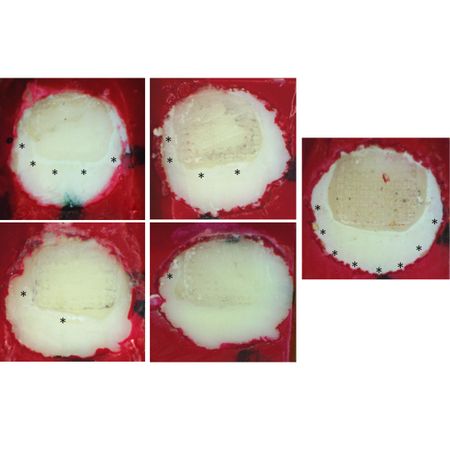
Objetivo: Avaliar in-vitro o efeito de uma aplicação única de cremes dentais de CPP-ACP e diferentes soluções fluoretadas na prevenção da cárie dentária ao redor de braquetes ortodônticos Material e Métodos: O conjunto dentes/braquetes (n=65) foi imerso em saliva artificial (1h em 37°C) randomizado e submetido a tratamento único (100μL; 1 min) de emulsão de fosfopeptídeo de caseína-fosfato de cálcio amorfo (CPP-ACP) e CPP-ACP associado ao flúor (CPP-ACPF); soluções de...
Leia mais
Introdução: Os bifosfonatos têm um impacto inibitório na atividade osteoclástica, reduzindo a reabsorção óssea. No entanto, a influência do risedronato no movimento dentário não está bem definida. Objetivo: Esta revisão sistemática avaliou o efeito do uso de risedronato no movimento ortodôntico dos dentes. Um relato de caso também é apresentado. Métodos: Dois revisores independentes pesquisaram seis bases de dados (PubMed, Web of Science, Ovid, Lilacs, Scopus e Open Grey),...
Leia mais
Objetivo: O objetivo deste ensaio clínico prospectivo foi avaliar as alterações dentárias e em tecidos moles que acompanham o uso de arco de extrusão de níquel-titânio (NiTi) com ancoragem esquelético na correção da mordida aberta anterior (MAA). Material e Métodos: Participaram deste estudo 20 pacientes do sexo feminino com idade média de 16,5 ± 1,5 anos e MAA dentoalveolar (média de 2,38 ± 0,7 mm). Todos os pacientes foram tratados com arco de extrusão de NiTi...
Leia mais
Objetivo: Este estudo cruzado e randomizado avaliou os índices periodontais de dois tipos de contenções 3x3 (uma contenção aço V-Loop de 0,032” modificada e uma contenção convencional de fio coaxial aço de 0,0215”) após colagem, por seis meses. Além disso, foram registradas a taxa de falha na colagem e um questionário sobre conforto, facilidade de limpeza e preferência geral. Material e Métodos: Foram incluídos nesse estudo 15 pacientes que usaram ambas as contenções por...
Leia mais
Objetivo: Comparar os fios de níquel-titânio (NiTi) e de cobre-níquel-titânio (CuNiTi) quanto à eficiência do alinhamento e quantidade de reabsorção radicular, após alinhamento completo dos dentes da região anterior inferior. Métodos: Neste estudo clínico randomizado, cego, paralelo, de dois braços, quarenta e quatro pacientes com má oclusão Classe I e apinhamento anterior inferior foram recrutados na clínica ortodôntica do All India Institute of Medical Sciences (Jodhpur,...
Leia mais
Introdução: As vantagens e desvantagens do uso de alinhadores ortodônticos têm sido reportadas com base mais na experiência clínica e opinião de experts do que em evidências científicas. Outro aspecto importante é que os alinhadores estão em processo de evolução constante. Assim, torna-se importante obter evidências recentes, que abranjam as novas atualizações na tecnologia de confecção, no desenvolvimento de novos protocolos de planejamento para as movimentações, a...
Leia mais
Objective: The objective of this study was to determine how arch form and interproximal contact size displace mandibular teeth subjected to an anterior component of force (ACF). Methods: Nine finite element models (FEM) of the mandibular arch were developed using Ansys® v. 16.0 software. They were designed to evaluate the effects of three arch forms (triangular, oval, and square) and three contact sizes (point-to-point, 1 mm diameter, and 2 mm diameter). All nine models were subjected to an...
Leia mais
Objective: To assess the in-vitro effect of single applications of CPP-ACP pastes and different fluoridated solutions on the prevention of dental caries around orthodontic brackets. Material and Methods: Tooth/bracket sets (n=65) were immersed in artificial saliva (1h at 37ºC) and randomly subjected to single applications (100μL; 1min) of casein phosphopeptide- amorphous calcium phosphate (CPP-ACP emulsion), CPP-ACP with fluoride (CPP-ACPF emulsion), solutions of titanium tetrafluoride (TiF4)...
Leia mais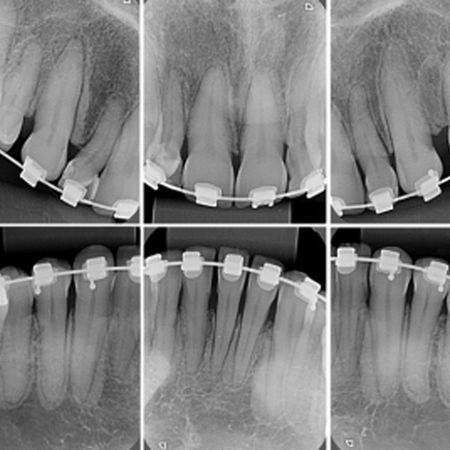
Introduction: Bisphosphonates have an inhibitory impact on osteoclastic activity, reducing bone resorption. However, the influence of risedronate on tooth movement is not well-defined. Objective: This systematic review assessed the effect of risedronate intake on orthodontic tooth movement. A case report was also provided. Methods: Two independent reviewers searched six databases (PubMed, Web of Science, Ovid, Lilacs, Scopus, and Open Grey). The searches were carried out in April/2020, and...
Leia mais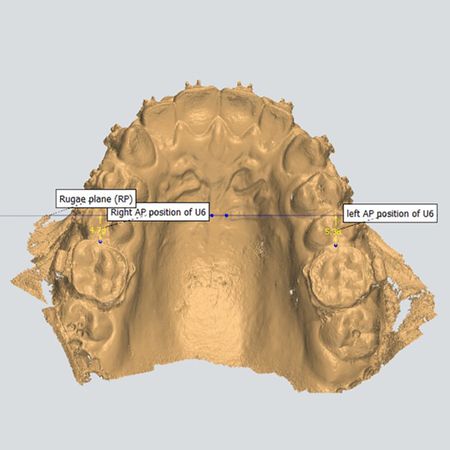
Objective: The purpose of this prospective clinical trial was to explore the dental and soft tissue changes accompanying the use of skeletally anchored nickel-titanium (NiTi) extrusion arch in the correction of anterior open bite (AOB). Material and Methods: Twenty female patients with a mean age of 16.5 ± 1.5 years and a mean dentoalveolar AOB of 2.38±0.7 mm participated in this study. All patients were treated with an maxillary 0.017×0.025-in NiTi extrusion arch, with the aid of miniscrews...
Leia mais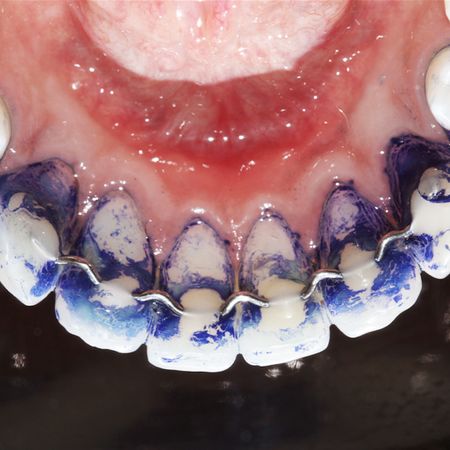
Objective: This randomized crossover trial evaluated periodontal indexes of two types of 3 x 3 retainers (a modified 0.032-in SS V-loop retainer and a conventional 0.0215-in SS coaxial wire retainer) after bonded for six months. Also, bonded failure rate, and a questionnaire about comfort, ease of cleaning and overall preference were recorded. Material and Methods: 15 patients were enrolled in this study who used both retainers for six months each, having a 15-day washout interval between...
Leia mais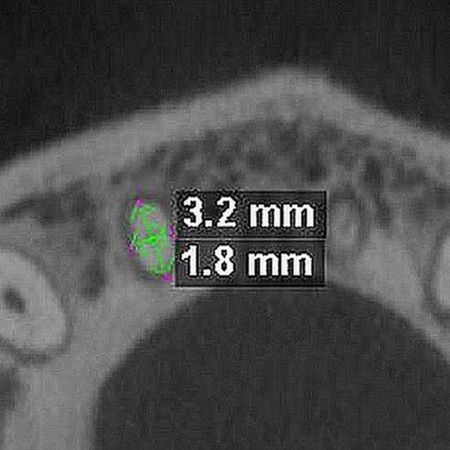
Objective: To compare alignment efficiency and root resorption between nickel-titanium (NiTi) and copper-nickel-titanium (CuNiTi) archwires after complete alignment in mandibular anterior region. Methods: In this two-arm parallel single-blind randomized controlled trial, forty-four patients with Class I malocclusion with mandibular anterior crowding were recruited form orthodontic clinic of All India Institute of Medical Sciences (Jodhpur, India). Patients were randomly allocated into NiTi...
Leia mais
Introduction: The benefits and safety of using orthodontic aligners have been reported more by clinical experience and expert opinion than by scientific evidence. Another important aspect is that aligners are constantly evolving. It is important to obtain evidence that allows for new updates in manufacturing technology, in the development of new movement planning protocols, in the incorporation and design of attachments, and in the aid of skeletal anchorage. Methods: Evidence retrieved from six...
Leia maisCopyright © 1998 - 2022 DentalGO | Todos Direitos Reservados. DentalGO é uma marca Dental Press